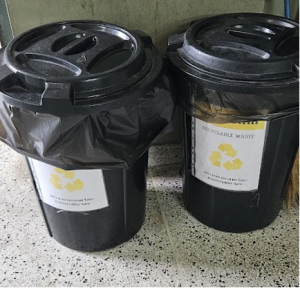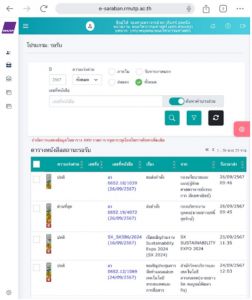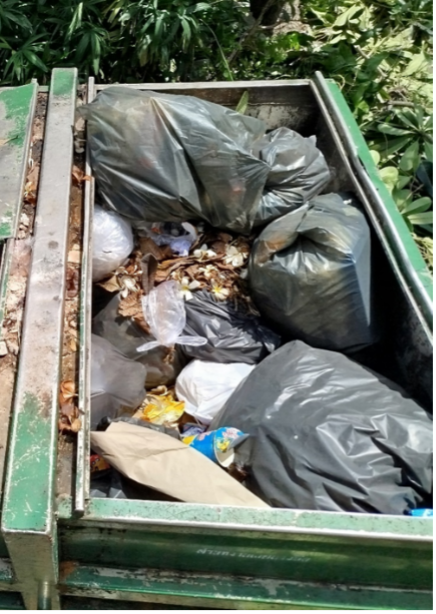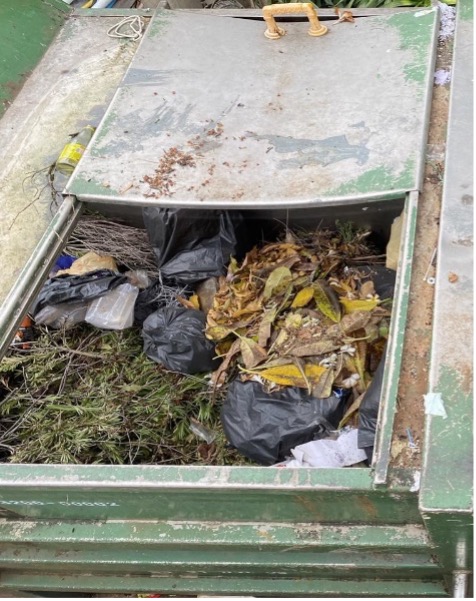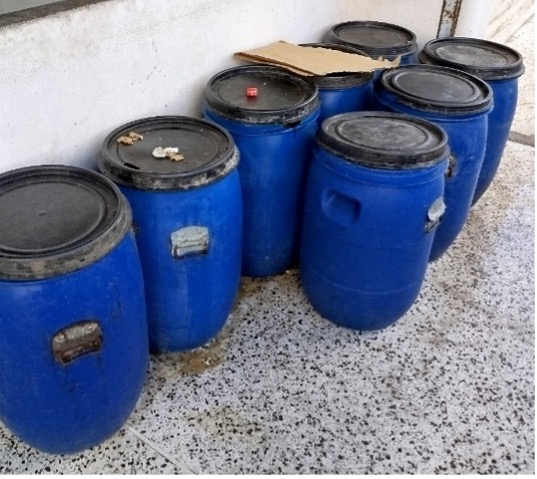Waste
Table of contents
3R (Reduce, Reuse, and Recycle) Program for the University’s Waste
An example of 3R program for the university’s waste
Our university is dedicated to promoting sustainable practices among both staff and students through the implementation of a robust 3R (Reduce, Reuse, Recycle) initiative. This comprehensive program aims to minimize our environmental footprint and foster a culture of sustainability within our academic community.
Efforts to Reduce Paper Usage
In a significant advancement towards reducing paper consumption, our university has successfully implemented an electronic document management system across 100% of our departments. This innovative system replaces traditional paper documents, enabling all members of our community to send, store, and manage documents electronically.
By transitioning to digital formats, we are actively working to decrease our reliance on paper resources, promoting efficiency and sustainability. This initiative not only streamlines administrative processes but also aligns with our commitment to fostering an environmentally responsible campus. We encourage all staff and students to embrace this change and contribute to our ongoing efforts in sustainability.
Encouragement to Reuse Resources
In addition to our electronic document management system, our university has fully implemented initiatives to promote the reuse of materials across 100% of departments. We encourage both staff and students to print double-sided when necessary and to seek innovative ways to repurpose existing resources.
Furthermore, we advocate for the reuse of plastic and cloth bags, emphasizing the importance of minimizing waste in our daily practices. These collective efforts foster a culture of sustainability and resourcefulness within our university community, reinforcing our commitment to environmental stewardship. We encourage everyone to participate actively in these initiatives to help create a more sustainable campus.
Waste Sorting and Recycling Initiatives
Our university is committed to promoting sustainability through comprehensive waste sorting initiatives implemented across all departments. Currently, 30% of our departments have fully adopted these practices.
Staff members are encouraged and empowered to sort recyclable materials, including plastic bottles and paper. These sorted materials are then sold to local recycling companies, contributing to a circular economy. Furthermore, our collaboration with the city’s recycling facilities ensures that waste is processed in an environmentally responsible and efficient manner.
These efforts not only help reduce landfill waste but also foster a culture of sustainability within our academic community. We are proud of the progress made thus far and remain dedicated to expanding these initiatives throughout the university.
Impact of 3R Programs
Although the 3R programs are in their early stages, we are already observing a significant reduction in paper plastic and waste. This positive trend underscores the effectiveness of our initiatives and the commitment of our university community to embrace sustainable practices.
Conclusion
Our university remains committed to enhancing and expanding the 3R initiatives, recognizing the crucial role they play in fostering a sustainable future. We encourage all staff and students to actively participate in these efforts and contribute to our collective goal of minimizing waste and promoting environmental stewardship. The average percent of implementation for all of the 3R programs are (100% +100% + 30%)/3 = 77%.
Program to Reduce the Use of Paper and Plastic on Campus
An example of a department's contribution to promoting the university's Green University Policy.
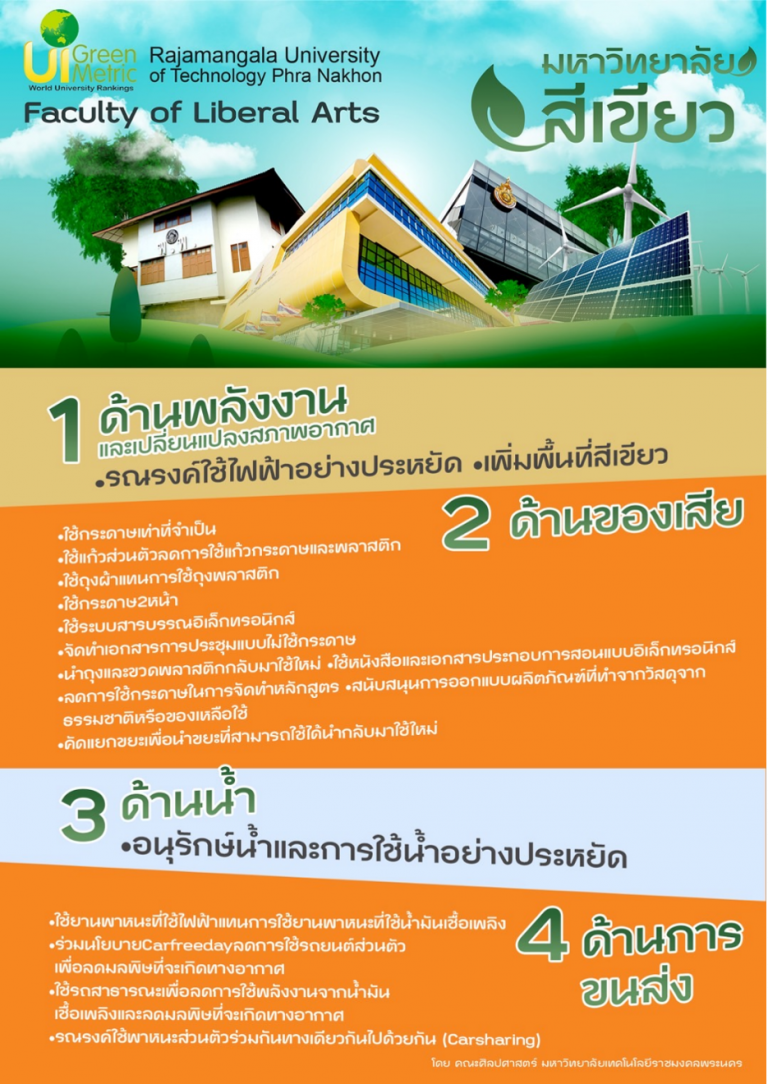
According to the university’s recognition of the importance of environmental management and its benefits for sustainable development, there is a commitment to effective waste management. To ensure this, the university has issued a policy for departments, personnel, and students to be aware of and implement waste management practices as follows:
- Reduce printed paper usage and only print when necessary.
- Promote the use of personal drinking glasses to decrease reliance on paper and plastic cups.
- Encourage the use of cloth bags instead of plastic bags.
- Advocate for double-sided printing.
- Promote the use of electronic document systems.
- Encourage the reuse of plastic bags and bottles.
- Advocate for using electronic media for textbooks and teaching materials.
- Promote the use of personal containers for food instead of paper or plastic plates.
- Reduce paper usage in administrative activities and curriculum development.
- Support the design of products made from natural or recycled materials.
- Implement waste sorting policies to recycle usable materials.
The Total Amount of Organic Waste Produced
Organic waste (Rajamangala University of Technology Phra Nakhon)
|
Types of Waste |
North Bangkok Campus |
Thewet Campus |
Chotiwet Campus |
Phra Nakhon Commercial Campus |
Chom Thong Campus |
Amount (tons) |
|
Organic |
27.62 |
11.57 |
11.2 |
42.48 |
6.12 |
98.99 |
|
– food waste from cafeteria |
24.0 |
9.12 |
– |
32.68 |
– |
65.8 |
|
– study activities, etc. |
3.62 |
2.45 |
11.2 |
9.8 |
6.12 |
33.19 |
The data pertaining to the organic waste generated by stakeholders at the university, including staff and students across various campuses, is presented in the table above. The total quantity of organic waste produced amounted to 98.99 tons. Notably, Phra Nakhon Commercial Campus emerged as the highest contributor, generating 42.48 tons of organic waste. This variation in organic waste production may be attributed to several factors, including campus size, student population, staff numbers, and the availability of facilities.
Furthermore, the table delineates specific categories of organic waste, focusing primarily on food waste from cafeteria operations and waste generated from academic activities. The analysis indicates that food waste accounted for a significant portion of the total, with a cumulative weight of 65.8 tons, surpassing the 33.19 tons attributed to waste from study activities. Within this context, Phra Nakhon Commercial Campus again reported the highest food waste generation at 32.68 tons, followed by North Bangkok Campus with 24 tons. In contrast, Chotiwet Campus demonstrated a higher production of organic waste from study activities, totaling 11.2 tons, relative to its food waste contributions.
This data underscores the need for a nuanced understanding of organic waste production across different campuses, which can inform strategies for waste reduction and resource management.
The Total Amount of Organic Waste Treated
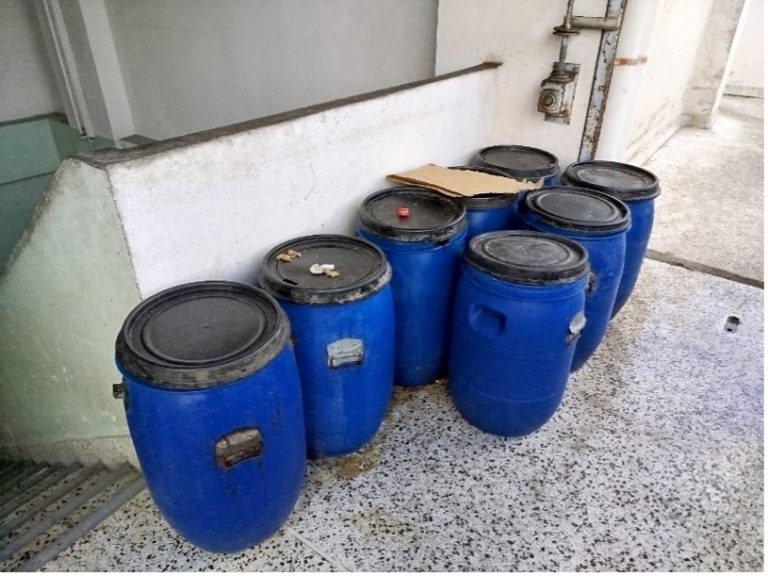
| Types of Waste | Amount (tons) | |
| Total | Recycled | |
| Organic | 98.99 | 24.0 |
| – food waste from cafeteria | 65.8 | 24.0 (North Bangkok Campus) |
| – study activities, etc. | 33.19 | – |
Rajamangala University of Technology Phra Nakhon recognizes the significant environmental impacts associated with organic waste—specifically, garbage, discarded food, and plant matter—generated on each campus and within the surrounding community. In addressing the management of organic waste, the university is expected to implement specific criteria and methodologies aimed at effective waste treatment.
The data presented in the table indicates a total production of organic waste amounting to 98.99 tons. This total comprises 65.8 tons attributed to food waste from the university cafeteria and 33.19 tons resulting from various university activities. Notably, a substantial portion of the food waste from the cafeteria at North Bangkok Campus is repurposed for animal feed, constituting 24.24% of the overall organic waste generated across all campuses.
This approach not only mitigates the environmental burden of organic waste but also highlights the university’s commitment to sustainable waste management practices.
Organic Waste Treatment
As discussed in section 3.4, Rajamangala University of Technology Phra Nakhon acknowledges the environmental impacts associated with organic waste on each university campus and the surrounding community. In terms of organic waste management, the practice of open dumping has been addressed uniquely by North Bangkok Campus, which has implemented a program to allow food stall owners and local farmers to collect leftover food for animal feed. This initiative has resulted in the recycling of organic waste, with approximately 24.24% of the total organic waste generated across all campuses being repurposed in this manner.
This approach not only reduces the volume of waste sent to landfills but also supports local agricultural practices, thereby reflecting the university’s commitment to sustainable waste management strategies.


